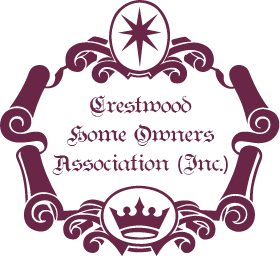Crestwood, which comes under the City of Gosnells, was officially opened in 1970, to provide a “Unique Way Of Life”. It was designed as a total living concept, where vehicular traffic is completely separated from recreational areas and pedestrian traffic. In the parklands you can take leisurely walks and children can ride their bikes without crossing roads.
View the Radburn, New Jersey website.
The sprawling suburb of Thornlie, with a population now close to 25,000, started developing in the 1950s with a view to encouraging inner city dwellers to move to more spacious rural surroundings.
Its development started with about 100 new three-bedroom, one-bathroom homes between Spring Road, Thornlie Avenue and Spencer Road, many of them built by Sloan Homes.
Growing rapidly on the back of the post-war housing boom, this was a Perth company which had the foresight in 1958 to purchase a 320ha block of land further south down Spencer Road – then nothing more than a dirt track – for the modest sum of $165,000.
Owner Ron Sloan was always on the lookout for ways to improve the quality of life for those who moved into any new developments he was planning.
Inspired by the late Paul Ritter, then Perth’s City Planner, he embarked on a 77-day worldwide tour to 19 countries on three continents to visit model housing estates, garnering new ideas for the planning and design of what was to become Thornlie’s Crestwood Estate.
Almost ten years in the making, Crestwood was in stark contrast to Perth’s normal pattern of suburban housing developments. It remains to this day one of Australia’s most unique private estates. Crestwood Estate was officially opened in 1970, to provide a “Unique Way of Life”.
Instead of creating large blocks and linear roads, Crestwood has relatively small beautifully landscaped blocks set on curved and circular roads which slow down traffic while offering constantly changing vistas. The design is such that it is possible to walk through the entire estate without crossing a road, due to its clever use of pedestrian paths and underpasses.
In addition, every one of the estate’s 295 homes backs onto parkland, each park large enough to kick a footy or play a game of backyard cricket, while staying in touch with home.
As the project neared completion in 1968, Mr Sloan had a ten month struggle to persuade the State Electricity Commission to take the unprecedented step of installing underground power cables – but that delay saw the housing market go from boom to bust, and it took some years for the blocks in Stage 1 of the estate to sell.
As a result, Sloan Homes sold off about 100ha of land earmarked for later stages of the Crestwood Estate – land which was later developed into the Castle Glen and Forest Lakes estates in the 70s and 80s.
When Crestwood was first released to the public it was advertised as “Royale Ridge of Crestwood”. Block prices started from $6,250 and it was envisaged Crestwood Estates would be made up of about 1200 residences stretching from Hume road to Warton Road. It was to include 3 higher density living villages, a total of 8 swimming pools and a country club with bowls and tennis courts. View the original colour sales brochure for Crestwood Estates click here.
In 1995 a booklet was put together to celebrate Crestwood’s 25 years. Download the booklet.



